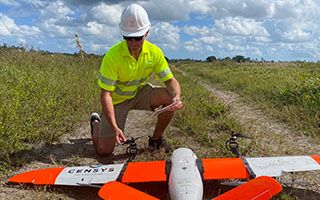
Sept. 30, 2021
The job market operating aircraft systems (UAS) in the U.S. is strong for well-qualified pilots, but as the sector is quickly evolving, position titles are non-uniform, and wages can vary widely depending on training, certifications and experience.
“In some roles, operation of the technology is part of an existing job role while in others, ‘UAS pilot’ is the job role,” said Josh Olds, president, and co-founder of the Unmanned Safety Institute (USI), a widely-recognized leader in flight training in the UAS space. “While a remote pilot certificate alone is not likely to land a high skill, high wage job role, we find that many of these roles are necessitating experience, either from traditional aviation or hours operating the technology for specific use cases.
“Remote pilot jobs are just the tip of the iceberg in terms of careers that exist within the industry of today,” he added. “Companies are hiring for everything from GIS specialists, data processors, safety managers and technicians,”
A look at salary.com reveals that the average UAS pilot in the U.S. can earn about $80,000. Job postings on Indeed.com for UAS and related jobs show that familiarity with a military operation, the intelligence community, counterintelligence and security could allow a full-time “UAS pilot – junior” to earn as much as $125,082 per year, while a contract “drone pilot” doing aerial surveying could earn $60 per hour or more depending on the area of the country in which they reside.
In order for the UAS industry to scale, Olds explained that growth will require regulations for true “beyond visual line of sight operation.”
“The industry is slowly growing within Part 107, but needs regulations designed for the true nature of the technology,” he said. “It is important to understand how airborne and ground-based risks and the ‘human-machine interface’ will impact the National Airspace System.”
